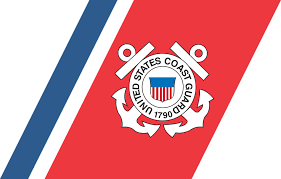

Current Location: 19.5N, 85.5W
Geographic Reference: 100 miles ESE of Cozumel, MX
Movement: East at 5 mph
Max Winds: 40 mph gusting to 50 mph
Current Hurricane Severity Index: 2 out of a possible 50 points (1 size, 1 intensity)
Max Predicted Hurricane Severity Index: 5 out of a possible 50 points (2 size, 3 intensity)
Current Radius of Tropical Storm-Force Winds: 100 miles
Max Predicted Radius of Tropical Storm-Force Winds: 120 miles
Organizational Trend: Little change during past 6 hours
Forecast Confidence: Average
Key Points
- There is a significant flood risk to the central Gulf Coast early next week
- The risk of heavy rains now extended through Tennessee
- Little impact is expected from west of New Orleans to Texas.
Our Forecast
There has been little change in terms of organization during the past 6 hours. There are no strong winds near the broad center. The heaviest squalls remain well east of the center due to strong wind shear. However, the shear should start to decrease late Saturday. Thus, slow intensification continues to be forecast beyond 24 hours. Our forecast is still for Alberto to have winds of 60 mph when it makes landfall.
Alberto is moving a little east of the previous track. There may be a center reformation overnight. This is why the forecast track was shifted slightly to the east in the short term. Longer term, we still expect a northwest motion in the Gulf of Mexico. The forecast closely follows the model guidance. Landfall is forecast to occur somewhere between Mississippi and the western Florida Panhandle late Monday. After landfall, the models are indicating a slightly faster forward speed. This means that some of the heavier rains may spread farther to the north, likely into Tennessee.
Expected Impacts Offshore
Mississippi Canyon to Lund – Squalls are possible late Saturday night through Monday with wind gusts to 50 mph. The strongest winds will remain east and northeast of this area. The last full day of good flying weather will be Saturday.
Main Pass/Viosca Knoll to Mobile Leases – Heavy squalls and winds of up to 50 mph will be possible Sunday night and Monday. Wind gusts may reach up to 70 mph in squalls to the east of the track. The last full day of good flying weather will be Saturday.
Expected Impacts Onshore
Florida Peninsula – Rain bands capable of producing heavy rainfall and gusty winds are expected on Saturday through Monday, resulting in brief street flooding and isolated power outages.
Florida Panhandle through Southern Mississippi and Alabama – Heavy showers and thunderstorms will occur from Sunday through Tuesday or Wednesday, resulting in widespread travel issues. Wind gusts in squalls may produce scattered power outages along the immediate coast of Alabama, Mississippi, and Florida.
Our next advisory will be issued by 3 AM CDT
Meteorologist: Derek Ortt / George Harvey
![]()
| Forecast Confidence: Average | Hurricane Severity Index | ||||||||
|---|---|---|---|---|---|---|---|---|---|
| Fcst Hour | Valid | Lat. | Lon. | Max Sustained Winds | Max Gusts | Category | Size | Intensity | Total |
| 0 | 9PM CDT Fri May 25 | 19.50N | 85.50W | 40 mph | 50 mph | Subtropical Storm | 1 | 1 | 2 |
| 12 | 9AM CDT Sat May 26 | 21.50N | 85.00W | 40 mph | 50 mph | Subtropical Storm | 1 | 1 | 2 |
| 24 | 9PM CDT Sat May 26 | 24.00N | 85.00W | 40 mph | 50 mph | Subtropical Storm | 1 | 1 | 2 |
| 36 | 9AM CDT Sun May 27 | 26.50N | 85.50W | 45 mph | 60 mph | Tropical Storm | 1 | 2 | 3 |
| 48 | 9PM CDT Sun May 27 | 28.00N | 86.50W | 50 mph | 65 mph | Tropical Storm | 1 | 2 | 3 |
| 60 | 9AM CDT Mon May 28 | 29.00N | 87.50W | 60 mph | 75 mph | Tropical Storm | 2 | 3 | 5 |
| 72 | 9PM CDT Mon May 28 | 30.50N | 88.00W | 60 mph | 75 mph | Tropical Storm | 2 | 3 | 5 |
| 84 | 9AM CDT Tue May 29 | 32.50N | 88.20W | 35 mph | 45 mph | Tropical Depression | 0 | 1 | 1 |
| 96 | 9PM CDT Tue May 29 | 34.50N | 88.00W | 25 mph | 30 mph | Remnant Low | 0 | 0 | 0 |
| 108 | 9AM CDT Wed May 30 | 36.50N | 88.00W | 15 mph | 25 mph | Remnant Low | 0 | 0 | 0 |
The yellow cone represents track error from the previous five hurricane seasons. Over the past five hurricane seasons, the center of the storm tracked within the yellow cone 75% of the time. The cone does not represent the forecast uncertainty in the current advisory for this storm. In addition, hurricane-force winds, very high tides, large waves, and heavy rainfall can often extend well outside the yellow cone.



